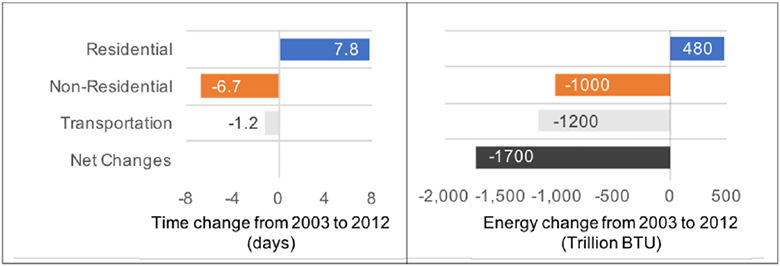Homebody saves energy, good for the environment

Despite significant progress in energy efficiency, all the same, in recent decades, humanity has consumed more and more energy, which is very sad for the environment. For example, in the USA, the total energy consumption of households from 1975 to 2015 increased by 39%, that is, for each resident the increase was 6%.
Electricity consumption is closely linked to lifestyle changes, which are affected by the rapid development of technology, as well as social, economic and demographic factors. The greatest impact on the lifestyle of people has had the development of IT.
The analysis of lifestyle and its impact on energy consumption is usually carried out by two methods:
- Analysis of retail sales of goods and services (different goods and services are associated with different amounts of energy consumed: for example, it affects the size of the house or the volume and energy efficiency of the car).
- Analysis of behavior by the amount of time people devote to different types of activity, by time and place. The choice of activities has a strong impact on energy consumption in many sectors of the economy (for example, after retiring, a person spends more time at home, does not need an office and usually travels less on transport, which affects energy consumption in the home, commercial transport segments, respectively) .
The authors of a new study from the University of Texas at Austin and the Rochester Institute of Technology studied how changes in time spent on different activities, that is, how changes in Americans' lifestyles, have affected energy consumption in different sectors. For example, the spread of information technology suggests that a person will spend more time at home on work, shopping and entertainment. In turn, this means a decrease in energy consumption in transport and in commercial real estate with an increase in domestic energy consumption.
Indeed, statistics collected over decades allow such estimates to be made. She shows that particularly noticeable changes in lifestyle began to occur in the last decade, with a noticeable spread of the Internet, computers and various gadgets.
For example, from 2003 to 2012, Americans began to spend at home an average of 7.8 days a year more, while at the same time they began to spend significantly less time in transport and commercial / public buildings.
Transport statistics show that the distance an average American traveled over different modes of transport over the year steadily increased from 6,200 miles in 1975 to 10,100 miles in 2008, and after that began to decrease and reached 9,500 miles in 2014. Less mileage in transport means more time elsewhere, most likely at home.
Scientists have compiled a model that links around-the-clock activity of people at their location and historical changes in energy consumption by sector: home transport and non-commercial real estate (offices, shops). They also compiled a model that finds a relationship and makes a prediction of how energy consumption will change when a particular type of activity changes.
Existing studies compile statistics on many types of activity (up to 465). In this case, the authors distributed them according to a key factor: location. It turned out that all activities can be divided into three places: home, transport and commercial / public building.
What happened?
The following table shows the change in American habits over 10 years in time (in units) spent on different activities.

And here is how the change in this activity is manifested in the change in energy consumption, if we take into account the influence of each activity on home energy consumption, transport and energy consumption of non-commercial / public buildings.

Thus, over 10 years, Americans began to spend significantly more time at home (+7.8 days) and significantly less - in transport / travel (-1.2 days) and commercial buildings such as office buildings and shops (-6.7 days). Accordingly, in homes, energy consumption increased, and in transport and other buildings - decreased by a large amount. According to scientists, such a lifestyle change only in 2012 led to the savings of 1,700 trillion BTU of electricity (1 kWh = 3412.14 BTU), which is 1.8% of the national energy consumption.
That's how information technology and home living in reality reduce energy consumption nationwide. This is their environmental benefit.
The scientific article was published on January 29, 2018 in the journal Joule (doi: 10.1016 / j.joule.2018.01.003).
